 Green Arrow continues to be one of the most surprising pleasures of the Rebirth line
Green Arrow continues to be one of the most surprising pleasures of the Rebirth line
Viewing: Blog Posts Tagged with: Green Arrow, Most Recent at Top [Help]
Results 1 - 11 of 11
Blog: PW -The Beat (Login to Add to MyJacketFlap)
JacketFlap tags: Reviews, rebirth, DC Comics, Green Arrow, Top News, Ben Percy, Otto Schmidt, Add a tag
Blog: PW -The Beat (Login to Add to MyJacketFlap)
JacketFlap tags: Green Arrow, Top News, Titans, Green Lanterns, Reviews, Superman, Batman, flash, rebirth, DC Comics, Add a tag
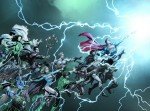 Another week, another roundup! Kyle Pinion and Alex Lu give their final thoughts on BATMAN #1, GREEN ARROW #1, GREEN LANTERNS #1, SUPERMAN #1, and TITANS: REBIRTH #1. Links to all the day's reviews inside!
Another week, another roundup! Kyle Pinion and Alex Lu give their final thoughts on BATMAN #1, GREEN ARROW #1, GREEN LANTERNS #1, SUPERMAN #1, and TITANS: REBIRTH #1. Links to all the day's reviews inside!
Blog: PW -The Beat (Login to Add to MyJacketFlap)
JacketFlap tags: Green Arrow, Black Canary, Top News, Reviews, Ben Percy, Otto Schmidt, rebirth, DC Comics, Add a tag
 Alex Lu and Kyle Pinion discuss Green Arrow #1 and find that this title is producing a superstar artist in the making!
Alex Lu and Kyle Pinion discuss Green Arrow #1 and find that this title is producing a superstar artist in the making!
Blog: PW -The Beat (Login to Add to MyJacketFlap)
JacketFlap tags: review, Reviews, Superman, Batman, rebirth, DC Comics, Green Arrow, Geoff Johns, Scott Snyder, Tom King, Green Lanterns, Add a tag
 Alex Lu and Kyle Pinion dig into the first week of DC's Rebirth #1s to tell you which books break new ground and which stay mired in DC's troubled past.
Alex Lu and Kyle Pinion dig into the first week of DC's Rebirth #1s to tell you which books break new ground and which stay mired in DC's troubled past.
Blog: PW -The Beat (Login to Add to MyJacketFlap)
JacketFlap tags: Top News, Felicity, Women in Fridges, Opinion, Television, cw, DC Comics, Arrow, Green Arrow, Add a tag
 On Arrow, women are constantly treated as tools rather than characters, used to further the legend of Oliver Queen.
On Arrow, women are constantly treated as tools rather than characters, used to further the legend of Oliver Queen.
Blog: PW -The Beat (Login to Add to MyJacketFlap)
JacketFlap tags: Comics, Retailing & Marketing, flash, Constantine, Green Arrow, Top News, Top Comics, Ody-C, TGI-FOC, Tooth & Claw, Add a tag
Welcome to TGI-FOC, a weekly feature at The Beat about comics on Final Order Cut-Off (FOC) and bits of the retail process that don’t merit a full column. I changed the name, for reasons. It’s a thing now.
RECOMMENDATIONS
It’s come up recently, so here’s the quick rundown of how I sell and recommend comics. First rule? Every comic is someone’s favourite. From AXIS to Tarot to Lumberjanes and beyond, there’s someone out there who is going to be blown away by the contents of a random comic. The goal, as always, is to match the comic to the audience, and to offer as little commentary as possible – unless asked point blank for an opinion. There’s a huge difference between “what’s this book about” and “what do you think of this book” – though in my experience, very few retailers and readers realize this. The amount of times I’ve heard people answer “what’s this book about” with “it sucks” is staggering, and it makes me sad. What if the person is the type who’d enjoy something you wouldn’t? When giving a recommendation or warning a potential reader of the dangers of reading, context is always key – which brings me to the second rule: always, always, always find out what a person likes before handing out recommendations. Do this by asking about their likes outside of the medium. It’s the best way to get the full range of a person’s likes, and it does a hell of a lot more for you than “I like Batman” or “I guess Saga is pretty good”.
Something to avoid? Recommending comics because you over ordered, or ordered lots. When you’re asked for a recommendation, someone is trusting you to help them out, not yourself. And sure, you might move a few copies of the book you over ordered, but at what price? If the customer doesn’t like the book, you’re going to have a harder time trying to sell them books in the future. Forget about the short term gain, and build a relationship that will help sustain your business. This is the reason why I never recommend books like AXIS to new readers – even if they’re looking for a book that has “a little bit of everyone in it”. A book like AXIS, you recommend to the folks who live and breathe Marvel, and the smattering of others who would be interested in the kind of bombastic story presented within. By and large, this kind of customer has a working knowledge of comics and a bit of the history – or at least enough to get them through the story with little incident. You would never, ever toss a new reader straight into the deep end, unless you knew they liked a bit of a challenge and like to troll Wikipedia (I have a few customers like that).
Anyway, there’s something out there for everyone, and little is accomplished by tearing down without context, at least as a retailer.
MARKETING
I’m not sure what the deal with October is, but I’m pretty sure the comic companies are trying to drown me in product. The first two weeks of the month have been weighed down with a lot of product, and after going through the FOCs for the last few weeks, I’m pretty sure we’re not going to see lighter weeks any time soon. The one good thing? The torrent of product gives me a lot of material to work with when it comes to talking about comics and marketing.
First, a big thumbs up for IDW’s push of V-Wars.
What you have there is a picture of the first trade (just $9.99), a value priced rerelease of the first issue ($1), and the clearly marked start of the second story arc. That’s a pretty good way of making sure anyone can try and continue to buy the series with relative ease.
Elsewhere, DC’s digital division hit the nail on the head by having the print editions of Flash: Season Zero #1 and Arrow: Season 2.5 #1 hit the stands just before and on their premieres respectively. People who were already excited about both shows found additional product, and others who didn’t know the shows were on or coming back were made aware. DC went the extra mile with Arrow by offering the first issue of Year One for a dollar, and having a great jumping on point in the character’s regular DCU ongoing (with one of the show runners acting as co-writer). As for The Flash, a solid effort was put in, but man, having a “Year One” story available for Barry Allen in the DCU would have been a great move, even if it was just the start of a mini set in current continuity.
As it stands, DC has been having a digital sale on a bunch of great <em>Flash</em> reads over at ComiXology, and has been doing so since the show premiered, so that’s pretty cool.
On the other hand, I’m not exactly sure what DC’s plans are for Constantine. I know they’re going to have a dollar book available when the show hits the airwaves, but where’s a good place for new fans to drop in on an ongoing? As it stands, my go-to is going to be recommending the newly minted Hellblazer trades and move things from there, but it hurts that I can’t point new readers in the direction of something currently in motion. The most recent issue of Constantine was an Earth Two tie in, which would only beget more questions than answers, and the collections of his current series throw him headlong into a big, messy crossover in the second trade. That’s not really an ideal situation, but it’s what’s there.
Though hey, points for the digital team for once again noticing a good marketing opportunity and plugging Constantine into the first issue of Injustice: Year Three. Again, the more ideal thing would be to have something with less baggage, but adding the character to one of their biggest digital successes certainly can’t harm things.
INCOMING
A couple of things to look out for on this week’s FOC for both retailers and readers alike:
Matt Fraction and Christian Ward’s ODY-C is on the list this week for shipping in late November. The reason for the big gap? Fraction and Ward are opening the thing with an eight page fold out. They wanted it to be larger, but apparently they’re jutting up against the edge of what can be done. Anyway, if you’re interested in a psychedelic gender-swapped version of Homer’s Odyssey – or know of anyone who might be – make sure your orders are placed sooner rather than later. (Spoiler alert: this is going to be crazy and wonderful and why wouldn’t you want such a thing?)
Also: Kurt Busiek and Ben Dewey’s Tooth and Claw #1 is on the list. 44 pages of stunning artwork, digging deep into an anthropomorphic fantasy world filled with magic and gods and all sorts of wonderful things. People who have read Astro City and things like Arrowsmith know that Busiek puts his all into his creator owned book, and the man’s imagination left unbridled is a sight to see. Ben Dewey’s art is some pretty next level stuff, and they’ve got the Eisner award winning Jordie Bellaire handling the colours – which means it will also be one of the best looking books on the stands at the beginning of November. Oh, and it’s just $2.99. A bargain!
***
TO BE CONTINUED…
And that will have to do it for this week. Real Thanksgiving is happening this weekend in Canada, wherein we celebrate the fact that an explorer didn’t freeze to death. Seriously, that’s why we celebrate it. And what’s more Canadian than celebrating the fact that you haven’t already frozen to death?
Anyway, prep for the holiday and the various festivities means this is short and late. Such is life. Until next time.
Blog: PW -The Beat (Login to Add to MyJacketFlap)
JacketFlap tags: Top News, SDCC '14, Justice League United, DC, Breaking News, Jeff Lemire, Green Arrow, Add a tag
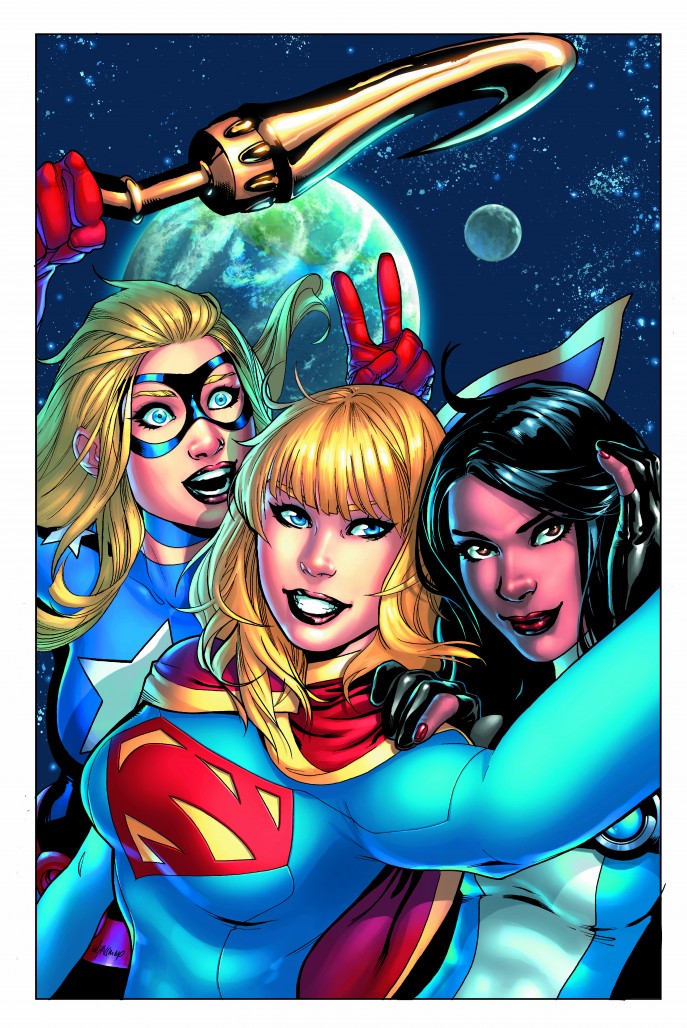 By Kyle Pinion
By Kyle Pinion
While Jeff Lemire has recently been making waves with the announcements of his upcoming The Black Hammer at Dark Horse and Descender at Image, his DC work continues to be amongst the premiere offerings of the publisher. I had a chance to sit down with Lemire to discuss what’s coming from him in The New 52.
Kyle: Congratulations on another well-deserved Eisner nomination for Trillium. It’s kind of funny to think about this – Trillium is sort of an opening shot in this line up of sci-fi titles that have started to release from other creators. Where do you see Trillium sitting in this “new sci-fi revolution” we’re seeing in comics?
Jeff: Yeah, well I think Saga was the first shot. It was so inspiring to see a sci-fi book do so well. I think every nerd has a sci-fi story they want to tell eventually, and this is the time. Where does Trillium sit? I don’t know – it just came out so you kind of have to look back in maybe 5 years from now to see where it stands and if people are still talking about it. I tried to experiment a lot and tried to tell an emotionally affecting story set in a big, cosmic setting. It’s hard to analyze your own work when it’s so fresh still.
Kyle: And I know you have a special attachment to the stuff you draw yourself. Do you have plans to do more of that soon?
Jeff: Yeah, I’m working on a graphic novel right now for Simon & Schuster that I’m drawing that’ll come out next fall. Then I’ll probably do another ongoing monthly thing that I’ll draw after that.
Kyle: Justice League United is one of my favorite titles coming out of DC right now. It’s very exciting and a lot of fun, the origins of that title though – it changed at one point from Justice League Canada when it was announced initially to Justice League United. Is there a background story as to why that changed?
Jeff: No, it’s pretty simple. I was really just taking over Justice League America and I wanted to move the team to Canada, which they were totally cool with, so we changed the title to Canada and then as we got closer to publication, I think they realized having Canada in the title might be a little bit too specific for international readers and American readers. So it just made sense. We want to get as many people reading the book as we can, and it didn’t affect the content of the story at all, so it was cool with me. No drama.
Kyle: The tone of Justice League United is very DC animated universe-esque. Was there an outward attempt to aim for a more fun tone?
Jeff: Yeah, very much. I feel like there are so many super hero comics that are very serious and take themselves very seriously. Green Arrow, for example, is very much that, I write some of that stuff too. But I think there needs to be more balance, and I think sometimes we forget that these are super hero comics. They should be fun, and the characters should be having fun. And I really tried to bring that back. A lot of the stuff that I read when I was younger, that I gravitated towards, had a sense of humor to it, and a sense of fun and wonder.
Kyle: It’s kind of opening up a lot of the cosmic stuff of the New 52 as well. Was that one of your long term goals with the series?
Jeff: Absolutely, yeah, that’s some of my favorite stuff in DC history is all the cosmic stuff. It was one big corner of the universe that hadn’t really been exploited too much aside from the Green Lantern titles, you know, so I felt there was a lot of potential there. I’m really getting into Raan and Thanagar and the politics there and seeing other alien races and the Legion of Super Heroes coming, which blows everything wide open.
Kyle: So what can you tell us about the Infinitus Saga?
Jeff: Ultra the Multi-alien, the child that they found in the first arc was a big part of that moving forward, and what Ultra is destined to become is something that has a huge impact in the 31st century. So we see a few Legionnaires come back to deal with Ultra, and that kind of spirals from there into a massive cosmic saga. I grew up reading Legion and the great darkness saga so this is my attempt to throw down the gauntlet and do one of those big sprawling space opera stories with like 40 super heroes running around the galaxy. It’s been a blast.
Kyle: Can we expect to see your Legion further beyond this story, possibly?
Jeff: I don’t know. I would love to. That’s definitely a property I have a lot of ideas and opinions on. I think there’s a lot of untapped potential right now. So that would be something I would definitely be interested in. Who knows?
Kyle: I hope so. Do you have a favorite Legionnaire, Jeff?
Jeff: I do. And it’s Ultraboy. Or Brainiac 5. Or Mon-El. Those 3.
Kyle: You get one choice sir!
Jeff: I always dug him (Ultra Boy) more as a kid, I love that idea that he was as powerful as Superman but he could only use one at a time, that’s so fun. It kind of limits him. Superman can be too powerful sometimes to write plausible threats for him, whereas Ultra Boy had that power but it was limited in a really fun and interesting way. He was very charismatic as well.
Kyle: The storytelling potential of that is pretty strong. I always liked the fact that his powers comes via a whale, being named Jo Nah.
Jeff: Those costumes are so cool, and for some reason his costume always got me. I just liked drawing it as a kid.
Kyle: So we can expect some good Ultra Boy scenes perhaps?
Jeff: Yeah I haven’t really had a really good one yet. I’m on the fourth script of a six issue story so I’ve got to really find a good moment. You’ve got to find one moment for everyone, because there’s so many of them. I’ll find his.
Kyle: And that’s going to run through the next, what, 5 issues of JLU?
Jeff: Yeah, it starts in the Annual. Then it goes for 5 issues after that. So 6 issues total.
Kyle: Is Mike McKone going to be penciling?
Jeff: No, Mike’s done on Justice League United. He’s moved on. Mike, he’s awesome to work with, I love him, but he always knew he was only going to do the first arc because I think he has some other projects he wanted to get done. So we’re bringing in an artist named Neil Edwards from the U.K. I think Neil worked with the same studio as Bryan Hitch, so they have a common thread in their style, and he’s great. He’s been great so far.
Kyle: Equinox is going to have her profile increase over the next few issues as well. Are you excited to have your own character that you created taking the forefront of the story?
Jeff: Very much so, there are a couple of cool things; like the Futures End issues where we jump 5 years into the future. I got to play with her and where she is 5 years from now, so she’s much more confident and much more entrenched in the larger DC universe, playing a bigger role, so that was fun. And in the Legion story, she’s someone who’s lived in a small isolated community, and all of a sudden she’s in space with 40 other alien super heroes, and her reaction to that is a lot of fun to play with, and her being an aboriginal woman and meeting Dawnstar who is an aboriginal woman from the future, and learning that she’s a huge inspiration for the next thousand years, is this really great moment that I’m really proud of.
Kyle: have you heard much from the basis of the character, Shannen Koostachin’s family?
Jeff: Yeah, it was kind of misreported. The character wasn’t really based on Shannen. Shannen – that story is very inspiring – she was a young activist who was killed, and I wouldn’t presume to try to tell her story in a super hero that without her family’s blessing or anything. The idea of creating a teenage character who was based in the same area, she is certainly one of the inspirations for her, but the character wasn’t really based on her.
Kyle: It’s good to have that clarification! So, with the little bit of time we have left I’d like to talk to you about Green Arrow. It’s a fabulous run, probably one of my favorite DC comics coming out right behind JLU, it’s coming to an end sadly. Was it always planned it would end at issue 35?
Jeff: No, I didn’t really know when it would end whe? I started it. I knew there was the big Outsiders story I wanted to tell and the Richard Dragon story, so I just kind of let it happen at its own pace. There were a couple of things that Andrea (Sorrentino) wanted to tackle project-wise and I think he was really a collaborator in every sense on this book, a real co-story teller, and I didn’t want to do the book without him. I feel like we had created something special together. I know he was anxious after 20 issues to move onto something else, move on to a new character and keep things fresh for him, so I knew that was coming. And the Futures End thing provided us with a unique opportunity to literally tell the end of Green Arrow’s story. Because he dies in Futures End, I could literally tell the story from my last issue to his death, the last 5 years of his life, and finish his story essentially. So that’s kind of a unique thing, because usually you just pass the character on so they can tell the rest of his life in one big issue.
Kyle: You are actually going to be able to hang on to Green Arrow and Animal Man and JLU, and you’ve got Frankenstein in Futures End. Isn’t it funny that you seem to have the same characters following you throughout the New 52?
Jeff: You fall in love with them, you invest in them, and you put a lot of yourself into them. You spend months and months and sometimes years writing the characters and it’s hard to let them go, you know? So whenever you can keep them and keep evolving them as characters, I always grab those opportunities.
Blog: PW -The Beat (Login to Add to MyJacketFlap)
JacketFlap tags: Jeff Lemire, DC Comics, Green Arrow, Gail Simone, Top News, Guillem March, Greg Pak, Andrea Sorrentino, andy kubert, Darkseid, Derek Fridolfs, Superman, Poison Ivy, The Joker, Villains Month, News, Reviews, DC, Add a tag
DC sent along a lovely pack of review copies for Villains Week, and I feel like it’s only fair that I read through all of the ones out this week and review ‘em. I’ll go from my least favourite to my favourite, ending with my favourite of this first lot. And hey! If DC send along a second selection next week, I’ll review those ones too!
Slight spoilers below, but nothing particular.
One thing that you should note is that some of the comics take place as part of Forever Evil – the Batman and Flash comics, it seems – whilst the Green Lantern/Superman issues are more general. So if you pick up Poison Ivy or Grodd, it’ll make reference to two of the more immediate moments which occur in Forever Evil #1. Keep that in mind as you buy the comics – they’ll all make sense, but some will be directly following on from the main story whilst others are unconnected origin stories.
Desaad
Paul Levitz (w), Yildiray Cinar (a), Jason Wright (c), Carlos M. Mangual (l), Anthony Marques, Mike Cotton (e)
I’m astonished this issue was made. Impossible to understand as a standalone story, it features a sequence about a mass shooting which is in extremely poor taste. The rest of the comic doesn’t explain who Desaad is or what’s going on, and is filled with concepts and ideas which are neither fleshed out nor coherent. The art tells the story – what little there is – well enough, but there are some dodgy character designs going on. I didn’t care at all about Desaad by the end of the issue.
Relic
Robert Venditti (w), Rags Morales (a/i), Cam Smith (i), Andrew Dahlhouse (c), Dave Sharpe (l), Chris Conroy (e)
There’s an interesting story in here somewhere, but the artistic choice made here turns an origin story into a complete chore to read. Every page is a splash page from Rags Morales, and he chooses some absolute clunkers. The first page shows a pretty galaxy with an arm floating into the left frame. What’s going on? Who knows. It’s boring.
Morales doesn’t make any of the concepts in Venditti’s script work, and his character designs are uninspired and uniform. Andrew Dahlhouse does his absolute best to clean up this mess, but it’s a lost cause. I can see that Venditti’s story would be interesting, if only the comic had been told sequentially instead of as a series of misconnected splash pages.
Joker
Andy Kubert (w), Andy Clarke (a), Blond (c), Jared K. Fletcher (l), Katie Kubert (e)
As you might expect, there’s really no reason to try and offer any backstory to The Joker. This issue tells a nonsense side-story from some point in Joker’s past, during which he has some flashbacks to his childhood. Really, any attempt to flesh out the past of the character is always going to flop – the more we know about Joker, the less interesting he is. As a result, the issue flails with an un-involving main story which bombs the final gag, and flashbacks which take away from the story entirely.
Andy Clarke’s artwork is lovely, as always, although the weak script means it’s very difficult to determine how some scenes are meant to be interpreted. There looks to be some intent at offering a subtext, but this is only conveyed in the art and not the script. It seems as though one of the supporting characters is secretly working at a cross-purposes, but there’s only so much the art can do without clear dialogue. Clarke attempts to elevate a completely throwaway storyline, but can only offer a very pretty, very weak, story.
Grodd
Brian Buccellato (w), Chris Batista (a), Tom Nguyen (i), Wes Dzioba (c), Wes Abbott (l), Kyle Andrukiewicz, Joey Cavalieri (e)
Grodd’s a curious character. The main reason he exists as a villain is because gorillas are scary, I guess? This is an issue which struggles because the character comes into this issue with a goal that doesn’t make any sense. Every single character in the comic calls him out for his strange decisions and ambition, and he basically hits them until they give up trying. Does it forgive a strange character if every other character CALLS him strange? I’m not sure on that.
Chris Batista, to me, is one of those artists DC have never appreciated quite enough, and his work here is really good fun – not everybody can draw an expressive gorilla. Not a bad issue by any means, but one which doesn’t manage to quite fix the character.
Cyborg Superman
Michael Alan Nelson (w), Mike Hawthorne (a), Daniel Brown (c), Carlos M. Mangual (l), Rickey Purdin (e)
Interesting, this one. It’s going to upset fans of the character, but tells a reasonably involving story. Framing two sequences against one another, the final few twists are very obvious, although Nelson mines from really fun laughs from Cyborg Superman’s sadistic quest for a sidekick. I don’t know how this actually fits in with established continuity – it would seem to wreck Green Lantern’s past storylines, for example – but we’ll have to see. It’s a perfectly fine comic, and Hawthorne’s art is like somebody put Jamie McKelvie and Stuart Immonen’s art in a blender. Good, in other words.
Two Face
Peter J. Tomasi (w), Guillem March (a), Tomeu Morey (c), Dezi Sienty (l), Darren Shan, Rachel Gluckstern (e)
Featuring an astonishingly drawn and coloured opening sequence between Two Face and Scarecrow whilst both are stood ON the Bat-Signal, the issue sadly then moves into familiar territory for the rest of the issue. Morey’s colouring is spectacular though, especially in the early stages of the issue. At first it feels like there’s a definite plan for the issue, until the story turns into a typical Two Face/anti-hero narrative. There’s nothing especially new here, especially for those who have read No Man’s Land and other stories where Two Face similarly has no Batman opposing him.
It’s entertaining, but it also feels like Tomasi is killing time for the last half of the page-count. There’s some good puns about duality, though, which is half the battle in a Two Face story.
Bizarro Superman
Sholly Fisch (w), Jeff Johnson (a), Andy Smith (i), Javier Mena, Jordie Bellaire (c), John J. Hill (l), Ricky Purdin (e)
This is actually a Lex Luthor story, and it follows familiar ground in an entertaining way. No other character in comics quite has that mix of ambition, arrogance and disregard that Luthor has, and Fisch nails the character. Bizarro Superman himself is a strange creature in the comic – his arc is obvious from the moment he appears. Interestingly enough, Bizarro at no point takes on the design he has in the cover – this is a step far removed from the ‘classic’ rendition of the character.
But despite the by-numbers nature of the narrative, the creative team fit enough touches of silliness and character into the story that the comic works very nicely indeed. I was surprised to find I enjoyed the comic so much, but it was a really solid issue.
Ventriloquist
Gail Simone (w), Derlis Santacruz (a), Karl Kesel (i), Brett Smith (c), Dave Sharpe (l), Katie Kubert (e)
Very much in-tone with her run on Suicide Squad, Gail Simone’s story here puts focus on different mindsets of villainy. One thing the writer has excelled at recently has been creating villains who do evil acts no other villain would do – her Deadshot felt like a unique person rather than a sarcastic goon with a gun, and she’s created some of the most genuinely unsettling villains of the last few years. So it is again with Ventriloquist, which focuses on the second iteration of the villain, Shauna Belzer.
Carefully told, even if it does require a rather large suspension of disbelief towards the end, the story gives us a version of the characters – both ventriloquist and dummy – which keeps readers surprised and unprepared for what might happen next. And when Simone does leave a blatant piece of foreshadowing in the story, she does it to drum up tension and let readers stay one step ahead of the characters. It’s a well-done story, which takes an (probably rightfully) underused villain and give them a bit of purpose and character. It might be deeply silly, but there’s a deadly slice of horror tucked away in there too.
Count Vertigo
Jeff Lemire (w), Andrea Sorrentino (a), Marcelo Maiolo (c), Rob Leigh (l), Harvey Richards, Will Moss (e)
A considered and underplayed issue, Green Arrow’s team make the most of this opportunity to build up one of the character’s most famous villains. Despite a slightly silly design, the character gets a much-needed redevelopment and sense of purpose which feels genuinely menacing. This doesn’t feel like a villain who is insane, but rather a methodical and calculated man who realises that breaking a moral code is preferable to getting left behind.
Sorrentino and Maiolo do some more wonderful work on the issue, continuing their incredible run of form. Sorrentino is the most distinctive and impressive artist at DC, and creates a wonderful sense of space in his work. On one page, for example, he breaks the story into ten page-width boxes, but without any of them feeling cramped on unintelligible. He does masterful work with POV framing, as well – he has an innate sense of perspective which makes it feel as though we’re looking directly out the eyes of the character, without things seeming like they’re overly-crafted and false.
It’s a very very strong issue indeed. Lemire unfolds an inevitable story as his own leisure, and leaves us with the indelible impression that Count Vertigo just became one of DC’s finest.
Poison Ivy
Derek Fridolfs (w), Javier Pina (a), John Calisz (c), Taylor Esposito (l), Kyle Andrukiewicz, Joey Cavalieri (e)
Like with the Two Face issue, this is an exploration in what Poison Ivy does when Batman isn’t around. And again, it’s basically what happened in No Man’s Land. The creative team manage to spread that idea out, however, and fill in some great details about the character and her origin. Also, there’s something quite enjoyable about seeing the character cut loose and have fun, because unlike most other Batman villains, her goal is philanthropically sociopathic. Fridolfs details how her ambitions are almost-so-close to being understandable, and Kalisz’ colours actually go a long way towards aiding that.
In the flashback sequences his colours highlight the character as a total innocent, in bright, warm pastels which makes the reader feel empathetic to her. Pina’s artwork is also excellent, presenting the character over the years as she ages – young and adult Ivy look like each other. I have a soft spot for the character, but the issue doesn’t rest on that hope. Instead, it offers a coherent origin story which binds the character’s personality together and leaves her in a stronger position than before.
Darkseid
Greg Pak (w), Paulo Siquiera, Netho Diaz (a), Hi-Fi (c), Dezi Sienty (l), Anthony Marques, Eddie Berganza (e)
The best issue so far, and likely to be the best of the initiative in general. Greg Pak offers us a talking Darkseid who earns his position as villain #1 in the DC universe. He’s scary and performs crazy, ambitious feats. What’s most notable is how Pak seeds his own just-started stories into the first Justice League story Geoff Johns wrote in the New 52 – it feels seamless and goes a very long way in fixing the problems many readers had with that first story.
A brilliant showcase for Darkseid as a villain, the issue is big and grandiose, explains who he is and why he does what he does, and makes the reader eager to read more Darkseid stories in future.
As I mentioned it in the Joker review, I should also mention it here – it’s a bit strange reading a Darkseid origin story. At the same time, so far in the New 52 Darkseid has been a bit rubbish… so I’m really just happy that the issue deals with him, gets it out the way and pushes the whole thing forwards.
Siquera, Diaz and Hi-Fi offer distinctive, eye-popping visual images whilst letterer Dezi Sienty handles the Kirby-esque dialogue with consummate ease. The ideas presented here could look silly and ridiculous, but for the intervention of Siquira and Diaz as artists. They handle everything thrown at them and turn it from nonsense into a believable (if strained) reality. If there’s one villain issue to pick up – it’s this one, for my money.
And here’s some numbers:
* five of the books are origin stories set primarily in the past
* six are set in the ‘present’ day, after Forever Evil #1
* three of them do not feature the ‘origin’ of the character profiled
* two books have a completely different character in the starring role, rather than the original pre-52 character
* four of the characters have a backstory of familial abuse/murder
* Batman, Superman, Darkseid, Count Vertigo, The Cyborg (Superman) and Desaad all get ‘created by’ credits.
Blog: PW -The Beat (Login to Add to MyJacketFlap)
JacketFlap tags: Marvel Comics, Dorothy Parker, DC Comics, Catwoman, jim lee, Arkham Asylum, Ron Perlman, Green Arrow, Big Two Comics, Top News, Katana, Louise Simonson, Ann Nocenti, WonderCon 2013, Larry Hama, Mark Gruenwald, Marvel Bullpen, Peter Sanderson, News, Interviews, Events, Comics, DC, Marvel, Add a tag
On March 30th, WonderCon attendees got treated to a bonus feature in a Spotlight panel with Ann Nocenti, Jim Lee acting as her interviewer. The two had so much shared history that they reminisced about the “good old days” at Marvel as well as plunging into the current artwork that most impresses them on their work for DC. The panel opened with a tone-setting description from Nocenti of her time as a Marvel writer and editor, “back in the day when Marvel Comics was so much fun”, when you could “smoke and drink and have guns in the office”. Lee confirmed that the gun in the office was an observable phenomenon, and Nocenti added by way of explanation that guns were needed for “reference”.
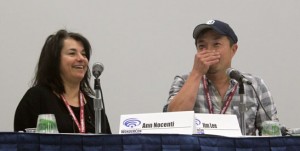 Lee started off by introducing Nocenti as the “self proclaimed female token writer at DC” and asked her how her current state came to be, considering that in her Marvel days there were several women on staff. Nocenti commented that though there were women at Marvel, she recalled that there were never any women at comic cons back then, unlike the demographic at WonderCon. “It must have been rough on you guys”, she teased Lee. Some of her workmates at Marvel, she explained, were Mark Gruenwald, “the soul of Marvel Comics”, Larry Hama, who was known for “pounding, crazy music” in his office, and Peter Sanderson, a “living archive” of all things Marvel.
Lee started off by introducing Nocenti as the “self proclaimed female token writer at DC” and asked her how her current state came to be, considering that in her Marvel days there were several women on staff. Nocenti commented that though there were women at Marvel, she recalled that there were never any women at comic cons back then, unlike the demographic at WonderCon. “It must have been rough on you guys”, she teased Lee. Some of her workmates at Marvel, she explained, were Mark Gruenwald, “the soul of Marvel Comics”, Larry Hama, who was known for “pounding, crazy music” in his office, and Peter Sanderson, a “living archive” of all things Marvel.
Nocenti obviously had fond memories of the bullpen days at Marvel, stating, “The physical bullpen made the place creative”. She had a steep learning curve upon arriving at Marvel with a fine arts background, and had a lot to learn under her first editor Jim Shooter, someone who she described as “having a beautiful sense of story” and who ingrained in her the need for a “can’t/must” moment of conflict for a hero. The maxim still holds true for Nocenti, she confirmed. “He’s right”, Lee said, “Conflict is one of the key things in drama”. “Louise Simonson also had a huge influence on me”, Nocenti added, a woman who had the “power to cloud men’s minds” according to legend, by infusing even her most severe criticisms with a “cheerful attitude”.
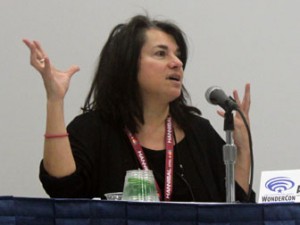 Nocenti shared some of the lessons she learned from editing at Marvel with the audience, including the need for the editor present a fan’s perspective to the writer or artist: “A good editor has to understand that a writer is working so hard, and is so over worked, that they need ideas thrown at them from a fan’s perspective”. But from the editor’s perspective, she observed, it often leads to bizarre conversations and often caused her to ask herself “Did I just say that?” when generating “wacky” ideas with writers. Nocenti particularly enjoyed crossover development in the bullpen, and feels that she wasn’t alone in that enthusiasm, sharing “really exciting creative meetings” where “everyone would want to play at the same party”. Her advice to editors is to “learn everything”, like a “captain knows how to run a ship”, and she feels that this approach was encouraged at Marvel, but is less common today. This enables an editor to “know what everyone’s going through”.
Nocenti shared some of the lessons she learned from editing at Marvel with the audience, including the need for the editor present a fan’s perspective to the writer or artist: “A good editor has to understand that a writer is working so hard, and is so over worked, that they need ideas thrown at them from a fan’s perspective”. But from the editor’s perspective, she observed, it often leads to bizarre conversations and often caused her to ask herself “Did I just say that?” when generating “wacky” ideas with writers. Nocenti particularly enjoyed crossover development in the bullpen, and feels that she wasn’t alone in that enthusiasm, sharing “really exciting creative meetings” where “everyone would want to play at the same party”. Her advice to editors is to “learn everything”, like a “captain knows how to run a ship”, and she feels that this approach was encouraged at Marvel, but is less common today. This enables an editor to “know what everyone’s going through”.
Lee presented Nocenti with a copy of a comic they had once collaborated on together, though she confessed she didn’t recall the book, X-Men #39. After flipping through it and chatting together, Nocenti declared, “This looks like a great story. I want to buy this and read this!”, to the audience’s amusement. Lee’s questions, however, led Nocenti into darker recollections, about the “mini implosion” period at Marvel that led to her departure. Ron Perlman, she narrated, came into her office one day, wanting to meet her, and was fairly charming, but the “next thing we knew, he had gutted Marvel” financially. It was a “very traumatic” experience for “old timers”, she commented, and brought to her attention a famous quote from Dorothy Parker: “Don’t put all your eggs in one bastard”. After leaving Marvel, Nocenti worked in journalism, teaching, and filmmaking, gaining a wealth of experience that she now finds useful for life back in comics.
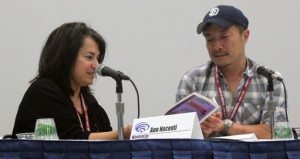 Writing a story about Catwoman in Arkham Asylum, for instance, she said, is drawn from a combination of her experiences working “at a place like Arkam” in her youth, and also from later editing Prison Life Magazine, which contained the work of prisoners. She observed a psychological feature that she’s incorporated into comics, the fact that it’s often “one small thing” that drives people crazy, not necessarily the bigger issues in life. Her experiences as a journalist and activist also led Nocenti to visit China, and some of her observations there led directly to her recent writing on GREEN ARROW, particularly noticing the pervasive “firewalls” on internet access in China and the sense of surveillance. Though she enjoyed working on GREEN ARROW, Nocenti explained that she “just couldn’t find her connection” to the character and was happy to move on to writing CATWOMAN, a character who she felt immediately in sync with. Her work on KATANA, too, keeps her imagination on its toes, drawing on the “idea of ancient clans, where the rich hire Samurais and ninjas are like spies”.
Writing a story about Catwoman in Arkham Asylum, for instance, she said, is drawn from a combination of her experiences working “at a place like Arkam” in her youth, and also from later editing Prison Life Magazine, which contained the work of prisoners. She observed a psychological feature that she’s incorporated into comics, the fact that it’s often “one small thing” that drives people crazy, not necessarily the bigger issues in life. Her experiences as a journalist and activist also led Nocenti to visit China, and some of her observations there led directly to her recent writing on GREEN ARROW, particularly noticing the pervasive “firewalls” on internet access in China and the sense of surveillance. Though she enjoyed working on GREEN ARROW, Nocenti explained that she “just couldn’t find her connection” to the character and was happy to move on to writing CATWOMAN, a character who she felt immediately in sync with. Her work on KATANA, too, keeps her imagination on its toes, drawing on the “idea of ancient clans, where the rich hire Samurais and ninjas are like spies”.
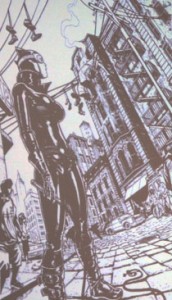 Lee and Nocenti spent the remainder of the panel showing and discussing process artwork and completed panels from upcoming CATWOMAN and KATANA stories, and enthusing over their finer features. The images included the set up for what Nocenti described as a “big gang war” for Catwoman and scenes in Arkham with “old torture devices”. Nocenti’s work on KATANA is based on her own obsession with martial arts and Kurasawa and martial arts films. “All comic book writers are doing really is unloading their personal obsessions on the page”, she confessed. This leads the writer to worry that readers might not find it interesting, she said, but in the case of Katana, Nocenti’s obsessions have translated to plenty of interest from fans. Nocenti regularly practises karate and judo around the house to see how Katana would move and act, and makes things even more “realistic” through watching martial arts films. It’s clear that her adaptable nature, shown throughout her varied career paths, is still going strong, and that her personal enthusiasm for her projects is still one of Nocenti’s most defining features.
Lee and Nocenti spent the remainder of the panel showing and discussing process artwork and completed panels from upcoming CATWOMAN and KATANA stories, and enthusing over their finer features. The images included the set up for what Nocenti described as a “big gang war” for Catwoman and scenes in Arkham with “old torture devices”. Nocenti’s work on KATANA is based on her own obsession with martial arts and Kurasawa and martial arts films. “All comic book writers are doing really is unloading their personal obsessions on the page”, she confessed. This leads the writer to worry that readers might not find it interesting, she said, but in the case of Katana, Nocenti’s obsessions have translated to plenty of interest from fans. Nocenti regularly practises karate and judo around the house to see how Katana would move and act, and makes things even more “realistic” through watching martial arts films. It’s clear that her adaptable nature, shown throughout her varied career paths, is still going strong, and that her personal enthusiasm for her projects is still one of Nocenti’s most defining features.
Photo Credits: All photos in this article were taken by semi-professional photographer and pop culture scholar Michele Brittany. She’s an avid photographer of pop culture events. You can learn more about her photography and pop culture scholarship here.
Hannah Means-Shannon writes and blogs about comics for TRIP CITY and Sequart.org and is currently working on books about Neil Gaiman and Alan Moore for Sequart. She is @hannahmenzies on Twitter and hannahmenziesblog on WordPress.
Blog: PW -The Beat (Login to Add to MyJacketFlap)
JacketFlap tags: Wonder Woman, Marvel Comics, archetypes, WonderCon, DC Comics, Green Lantern, Mark Waid, Green Arrow, Dan Slott, Top News, Doug Mahnke, Katana, Ann Nocenti, Cat Woman, J. M. De Matteis, Michele Brittany, News, Events, Comics, DC, Marvel, Conventions, Superman, Icons, Batman, panels, Add a tag
A panel on Friday, March 29th, the first day of programming at WonderCon brought together a rather iconic cast to discuss “iconic characters” and what keeps a character “true” to their origins over long periods of time. Mark Waid opened as moderator by pointing out that the table full of seasoned pros had more than 125 years of comics experience between them and most had worked on longterm characters and newer creations alike. The essential question posed by Waid was how to “vault” characters “into the 21st century without losing what keeps them special”. The question seemed particularly pertinent to Waid, whose ongoing work on DAREDEVIL has evoked critical acclaim. Waid asked his panellists how they handle the “core elements of characters” to face this challenge.
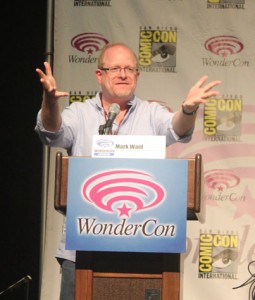 J. M. De Matteis introduced an image that stayed with the panellists as a reference point for discussion. He felt that creators handling long-lived characters work “within a cage”, so they can’t “go wide” with the character in term of change, but they can “go deep” in terms of making new discoveries. For De Matteis, personally, it’s all about the “Big Why” of characters, figuring out what makes them tick. He prefers working with super-villains to pose questions about the formative impact of their past histories because there’s “always a little corner of the psyche to dig into”. Ann Nocenti, however, in her recent work with Catwoman found that “her archetype was pretty clear” as a troubled kid originally, “on the streets” originally, and moving through “foster homes”. Her intuitive approach is to “play with a character and see what feels right” and she doesn’t mind the fact that later creators will do the same with long-term characters. It’s “like treading water”, she said, “You give a sense of constant, dynamic action, but you’re really not moving far”, and she expects later creators to be under the same constraint.
J. M. De Matteis introduced an image that stayed with the panellists as a reference point for discussion. He felt that creators handling long-lived characters work “within a cage”, so they can’t “go wide” with the character in term of change, but they can “go deep” in terms of making new discoveries. For De Matteis, personally, it’s all about the “Big Why” of characters, figuring out what makes them tick. He prefers working with super-villains to pose questions about the formative impact of their past histories because there’s “always a little corner of the psyche to dig into”. Ann Nocenti, however, in her recent work with Catwoman found that “her archetype was pretty clear” as a troubled kid originally, “on the streets” originally, and moving through “foster homes”. Her intuitive approach is to “play with a character and see what feels right” and she doesn’t mind the fact that later creators will do the same with long-term characters. It’s “like treading water”, she said, “You give a sense of constant, dynamic action, but you’re really not moving far”, and she expects later creators to be under the same constraint.
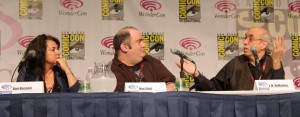 Doug Mahnke’s challenges, as an artist working on long-term heroes, is rather specific, handling costumes and their overtones. He observed that heroes, even today, often don’t look “contemporary” because their appearance has become iconic and we no longer question the anachronism, like Superman’s “underwear outside his pants”. Other features like capes and boots, Mahnke said, “made sense at the time” they were created based on a “swashbuckling” influence. In fact, he explained, an artist’s job is to “bring out the majesty in the character. It doesn’t matter so much what they’re wearing”, but you can use costume as a “tool” to use to your advantage.
Doug Mahnke’s challenges, as an artist working on long-term heroes, is rather specific, handling costumes and their overtones. He observed that heroes, even today, often don’t look “contemporary” because their appearance has become iconic and we no longer question the anachronism, like Superman’s “underwear outside his pants”. Other features like capes and boots, Mahnke said, “made sense at the time” they were created based on a “swashbuckling” influence. In fact, he explained, an artist’s job is to “bring out the majesty in the character. It doesn’t matter so much what they’re wearing”, but you can use costume as a “tool” to use to your advantage.
 Several of the panellists then commented on the fact that objectively, some of the nomenclature and costumes of characters created decades ago would seem “stupid” now. Nocenti’s example was a resurrection of a minor character, Zebra Man who was “visually fantastic” but the name and concept bizarre. Slott felt that once an icon is an icon, “the fact that it’s an icon gives it weight”, preventing further critique from readers. Even Waid’s considered opinion was that “Green Lantern” is a “stupid name for a character, but after 75 years”, it has “gravitas”.
Several of the panellists then commented on the fact that objectively, some of the nomenclature and costumes of characters created decades ago would seem “stupid” now. Nocenti’s example was a resurrection of a minor character, Zebra Man who was “visually fantastic” but the name and concept bizarre. Slott felt that once an icon is an icon, “the fact that it’s an icon gives it weight”, preventing further critique from readers. Even Waid’s considered opinion was that “Green Lantern” is a “stupid name for a character, but after 75 years”, it has “gravitas”.
 The panel then tackled the question of when and how exactly a character becomes officially iconic, and they set the bar high on awarding this status. De Matteis opined that “nothing about the character idea makes it iconic. It’s the execution”, and not every character reaches this status despite reasonably strong storytelling behind them. Dan Slott interjected that it only takes “one writer and one artist to do it”, like Frank Miller on DAREDEVIL. The discussion often drifted into slap-stick commentary on the more absurd aspects of superhero lore like the possession of a super vehicle as an icon accoutrement. Nocenti provided the little known detail that Cat Woman’s car is known as a “Catillac”. Slott confessed to proposing in a “meeting with real adults” that Superman’s car should be known as “Superman’s Ford Taurus of Solitude” with disasterous results.
The panel then tackled the question of when and how exactly a character becomes officially iconic, and they set the bar high on awarding this status. De Matteis opined that “nothing about the character idea makes it iconic. It’s the execution”, and not every character reaches this status despite reasonably strong storytelling behind them. Dan Slott interjected that it only takes “one writer and one artist to do it”, like Frank Miller on DAREDEVIL. The discussion often drifted into slap-stick commentary on the more absurd aspects of superhero lore like the possession of a super vehicle as an icon accoutrement. Nocenti provided the little known detail that Cat Woman’s car is known as a “Catillac”. Slott confessed to proposing in a “meeting with real adults” that Superman’s car should be known as “Superman’s Ford Taurus of Solitude” with disasterous results.
Waid observed that some characters are iconic in pop culture without necessarily being long-lived, like Woody Woodpecker, who’s highly recognizable, but not a currently active character. Waid commented that the tendency toward merchandizing may encourage the slow-down or freeze of new developments in a character since “every character becomes a beach towel” in the end. The entire panel segued into a long and fairly serious discussion of Wonder Woman as a character and why she has, or has not, lived up to her iconic status in terms of actual comic storytelling.
Most felt, like De Matteis, that Wonder Woman comics have not always been “all that good”, nevertheless the character definitely qualifies as “iconic”. Waid had a fairly idiosyncratic theory behind why this is the case. He observed that there was a strong “sexual element” to the “first 10 years of the strip” that was later removed to render the character more “plain vanilla”, and that now, lacking that “x-factor of sexuality”, stories fail to live up to the early days (an issue, he said, he frequently discusses with Grant Morrison). Slott disagreed pointedly with Waid’s assessment. He instead blames the lack of verve in Wonder Woman comics to the fact that comics are essentially a “make dominated industry” that has not explored the “many angles of the character” sufficiently. Slott still feels that if the right team is put together, the stories can rise to iconic status again, without recourse to the “weird quirky bits”. His choice of phrase caused plenty of giggling among the panellists.
This led Waid to ask his panel how they decide what elements are most essential to a character, what continues to translate, and what can be left behind. De Matteis advised to “always approach the characters psychologically and emotionally” and not worry too much about the “other stuff”, and sometimes that psychological appeal can be found in lesser known characters. Nocenti commented that her current work on KATANA based on the strange but intriguing concept of a “girl with a sword” produced “good potential” for developing “obsessional love triangle” elements between herself, her murdered husband, and his murdering brother.“The less iconic a character, the more fun you can have!”, she enthused.
Slott agreed with Nocenti on this idea, up to a point. When you’re handling an iconic character, readers lose the fear that their reckless lifestyles will do them in, whereas if a character is “unknown”, “Everyone is worried”, wondering if they will survive from issue to issue. Slott and Nocenti shared an interesting moment of commiseration, albeit brief, about their mutual killing off of Spider-based characters, and the emotional reaction of fans. “Screw letters from emotional fans”, Slott concluded, laughing, but Waid intervened by informing the audience that he’s sure Slott “weeps himself to sleep at night with 6 year olds’ fan mail” over the death of Spider-Man .
 The panellists didn’t always find their subject matter easy to decipher, nor did they feel that there’s always an easy answer for why some characters “click” as icons and some don’t. Batman, particularly, has a mysteriously successful dynamic, they said. But some things do change. Waid observed that he “couldn’t have imagined a world where I walked down the street and everyone knew who Tony Stark was” until after the Iron Man films had been made. Waid suggested that iconic status for characters might be measured in the number of imitators who have sprung up. De Matteis returned to his general position that archetypal patterns determine iconic status, however. Slott provided examples, stating that Superman is like Hercules, Batman a being on a vengeance-quest, and Tony Stark is, too, iconic in formula, as a combination of “Man and Machine”, an icon that the world is ripe for right now.
The panellists didn’t always find their subject matter easy to decipher, nor did they feel that there’s always an easy answer for why some characters “click” as icons and some don’t. Batman, particularly, has a mysteriously successful dynamic, they said. But some things do change. Waid observed that he “couldn’t have imagined a world where I walked down the street and everyone knew who Tony Stark was” until after the Iron Man films had been made. Waid suggested that iconic status for characters might be measured in the number of imitators who have sprung up. De Matteis returned to his general position that archetypal patterns determine iconic status, however. Slott provided examples, stating that Superman is like Hercules, Batman a being on a vengeance-quest, and Tony Stark is, too, iconic in formula, as a combination of “Man and Machine”, an icon that the world is ripe for right now.
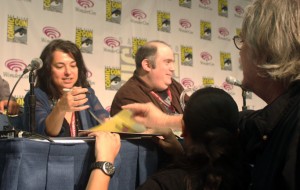 The panellists’ parting thoughts during the Q and A period focused on an interesting point made from the audience about the superhero/villain ratio. With so many more supervillains than superheroes in comics, “recycling” them is the norm, but at what point do they become “stale” and need to be retired, at least for awhile? De Matteis was firm about the roles of the artist and writers, insisting that there are “no stale characters but stale interpretations of characters” and that good work will prevent this problem. “Every character is great if you did into them in the right way”, he said. Waid’s closing example to support De Matteis’ point was that “20-25 years ago, no one would have thought that GREEN ARROW would become 2 times the best selling DC book, and then get his own TV show”. His bottom line: “If you dig deep enough you can find something that resonates”, and that’s the key to creating an icon, something that may not happen overnight.
The panellists’ parting thoughts during the Q and A period focused on an interesting point made from the audience about the superhero/villain ratio. With so many more supervillains than superheroes in comics, “recycling” them is the norm, but at what point do they become “stale” and need to be retired, at least for awhile? De Matteis was firm about the roles of the artist and writers, insisting that there are “no stale characters but stale interpretations of characters” and that good work will prevent this problem. “Every character is great if you did into them in the right way”, he said. Waid’s closing example to support De Matteis’ point was that “20-25 years ago, no one would have thought that GREEN ARROW would become 2 times the best selling DC book, and then get his own TV show”. His bottom line: “If you dig deep enough you can find something that resonates”, and that’s the key to creating an icon, something that may not happen overnight.
Photo Credits: All photos in this article were taken by semi-professional photographer and pop culture scholar Michele Brittany. She’s an avid photographer of pop culture events. You can learn more about her photography and pop culture scholarship here.
Hannah Means-Shannon writes and blogs about comics for TRIP CITY and Sequart.org and is currently working on books about Neil Gaiman and Alan Moore for Sequart. She is @hannahmenzies on Twitter and hannahmenziesblog on WordPress.
Blog: PW -The Beat (Login to Add to MyJacketFlap)
JacketFlap tags: Reviews, Comics, DC, Art, Jeff Lemire, Green Arrow, Top Comics, Andrea Sorrentino, Add a tag
TweetIt must be difficult to put out a comic when Hawkeye comes out. But especially so if you also happen to be writing a book starring a blonde-haired archer. That’s a problem Jeff Lemire faces today as he comes onto Green Arrow with artist Andrea Sorrentino today, in the hopes of giving the floundering series [...]



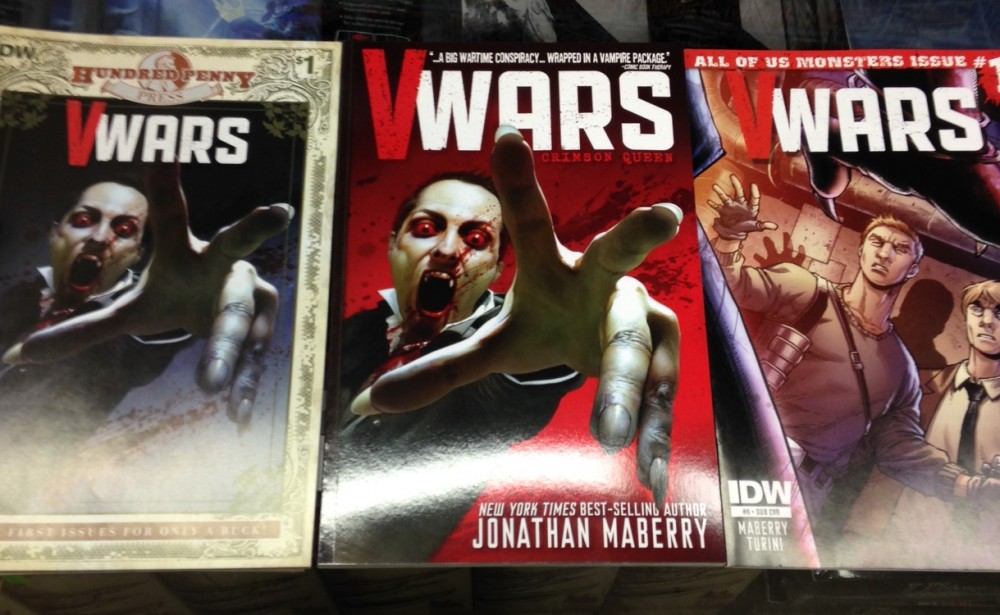
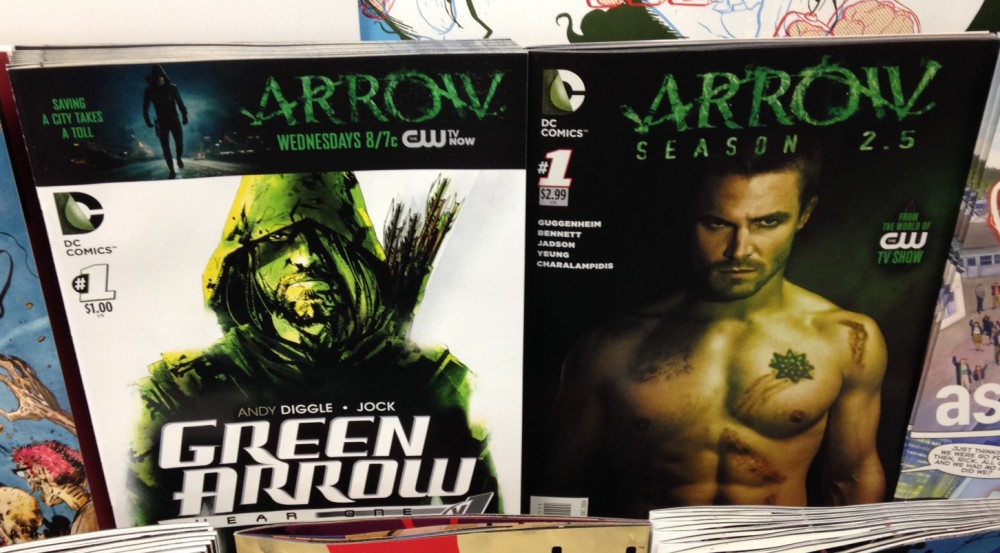
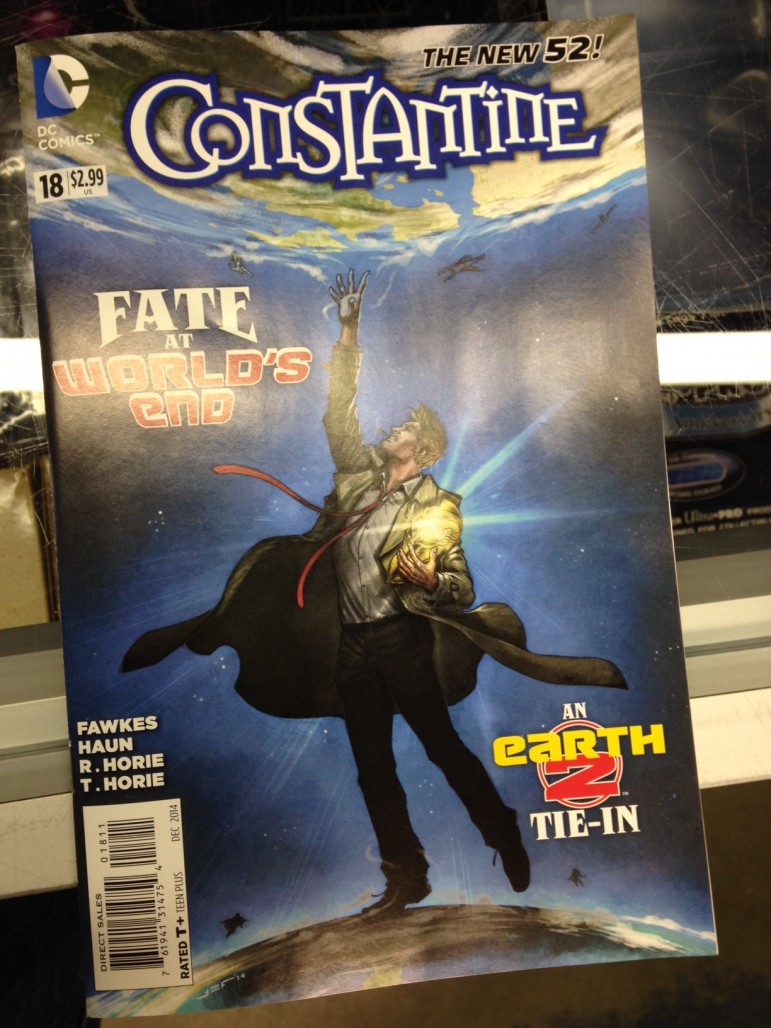





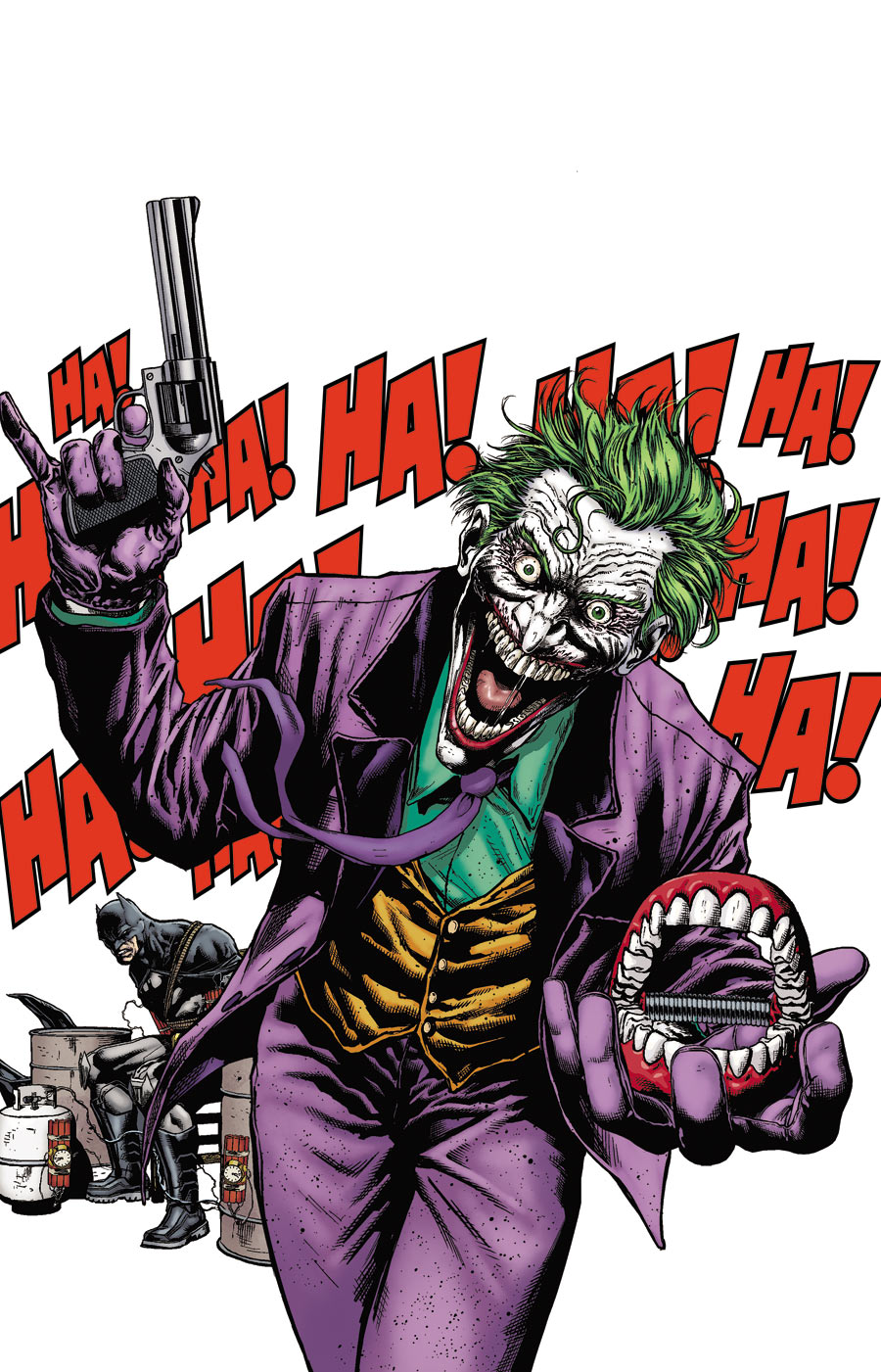


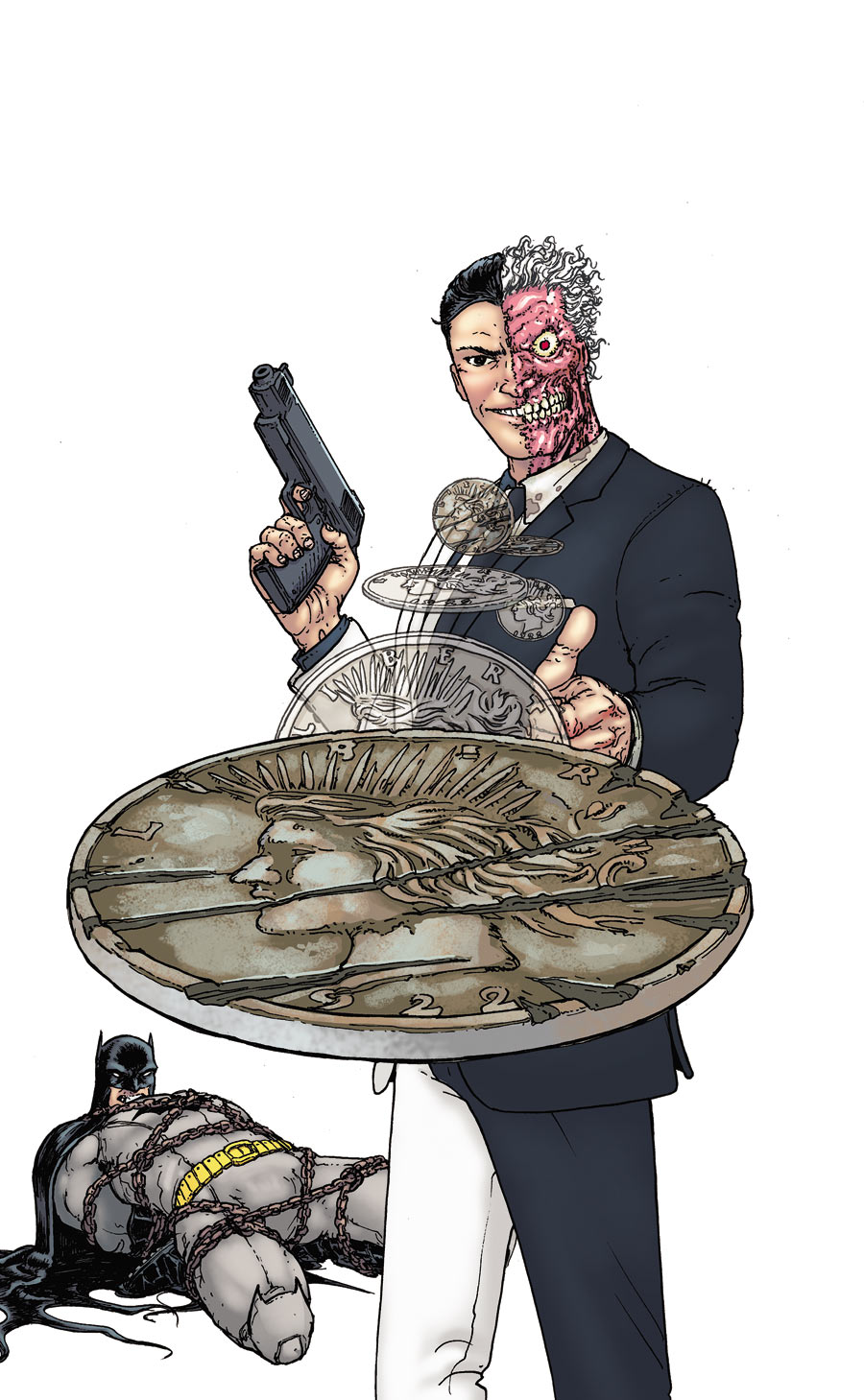
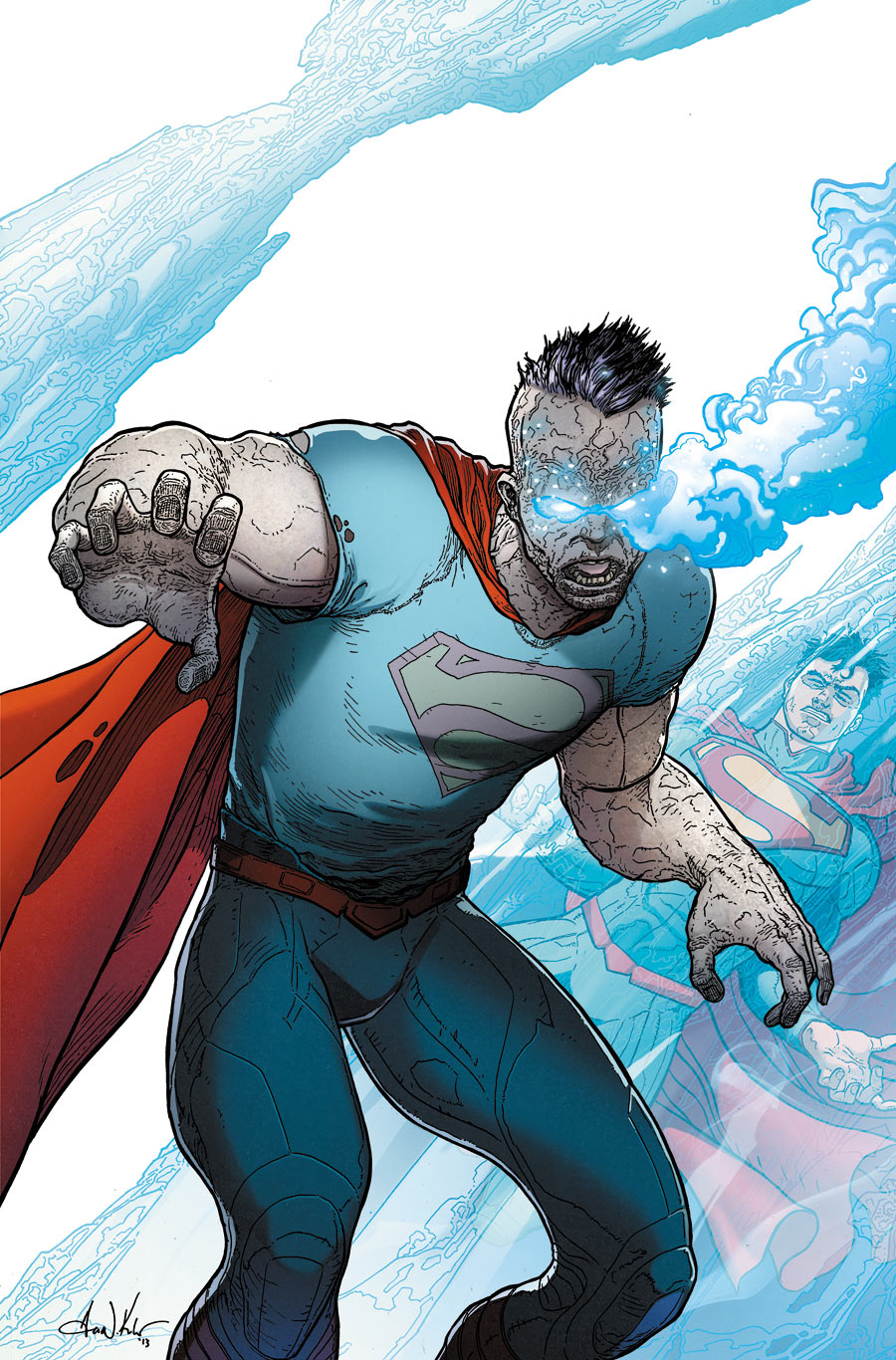





What a substantial “article” this one was.
I grabbed everything but Green Lanterns. Rebirth has been good for my LCS and I’ve been pretty excited to see what they are going to do from here on out. I honestly haven’t looked forward to each issue of Superman this much since John Byrne was on the book.
You and I are on the same page Shawn, though John Byrne was just a tad before my regular reading kicked in, my era was Ordway-Jurgens-Stern etc. Looking forward to reading Action next week!
real strong week, all titles were very good reads